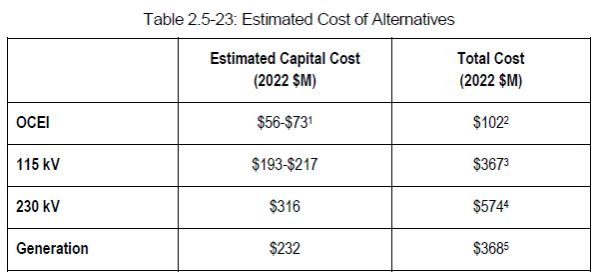California has become the cutting edge of the energy transition in the United States. Not only was the state one of only three to get more than 10% of its electricity from solar last year, but it has been reducing gas use and greenhouse gas emissions every year since 2014.
This has been led by policy, and as part of this California’s regulators are beginning to choose clean energy not only over new fossil fuel-fired plants, but existing generation. Last week the state’s grid operator approved a proposal by utility Pacific Gas & Electric Company (PG&E) that utilizes clean energy, energy storage and transmission and substation upgrades to replace the 40-year old Dynegy Oakland Power Plant, which runs on jet fuel.
Through the Oakland Clean Energy Initiative (OCEI, see p. 128), PG&E plans to procure 20-45 MW of “clean energy” in the local area. This can include both Renewable Portfolio Standard-eligible resources such as solar PV, as well as energy efficiency and demand response. The exact mix does not appear to have been determined at this time, but under the plan PG&E must deliver at least 19.2 MW of demand response when called upon.
“We think all technologies have potential to make a contribution to the portfolio but it will come down to how competitive the offers are in the solicitation,” PG&E told pv magazine. “However, demand response alone will not be sufficient to meet the entire need, due to its size relative to local loads and short lead-time to respond to a contingency event.”
Along with this PG&E plans to deploy at least 10 MW / 40 megawatt-hours (MWh) of energy storage within certain geographical boundaries, as well as upgrades to transformers and substations and a transmission line rerate, and continued use of shifting power from north to south under certain conditions.
PG&E will seek approval through the California Public Utilities Commission’s procurement process for the additional “preferred resources” for OCEI. The plan won out against three other proposals by NextEra and Trans Bay Cable, and California ISO documents show that it was by far the least expensive option.

PG&E describes the plan as a landmark in dealing with reliability needs. According to the utility’s press release:
The OCEI would mark the first time that local clean-energy resources are proactively deployed as an alternative to fossil-fuel generation for transmission reliability in PG&E’s service area.
The plan was additionally supported by an electrical worker’s union local, the Port of Oakland, environmental groups including the Environmental Defense Fund.
PG&E plans to make its filing with CPUC by the end of the year, and to put all resources in service by mid-2022.
This content is protected by copyright and may not be reused. If you want to cooperate with us and would like to reuse some of our content, please contact: editors@pv-magazine.com.









By submitting this form you agree to pv magazine using your data for the purposes of publishing your comment.
Your personal data will only be disclosed or otherwise transmitted to third parties for the purposes of spam filtering or if this is necessary for technical maintenance of the website. Any other transfer to third parties will not take place unless this is justified on the basis of applicable data protection regulations or if pv magazine is legally obliged to do so.
You may revoke this consent at any time with effect for the future, in which case your personal data will be deleted immediately. Otherwise, your data will be deleted if pv magazine has processed your request or the purpose of data storage is fulfilled.
Further information on data privacy can be found in our Data Protection Policy.